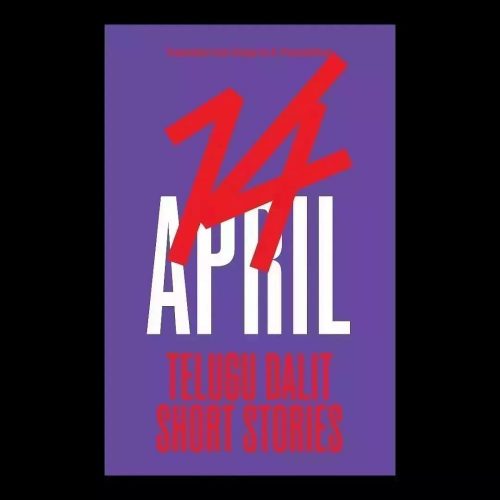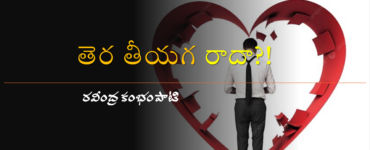Equality, freedom, justice and love are basic sentiments of people and society; they are many times more important than pleasure and beauty.
–Sharankumar Limbale
The Beginning of a Genre
It took seven years for Dalits, from being written about in 1925, to writing themselves in 1932, when Bhagyareddy Varma, the earliest Dalit writer in Telugu published his work portraying vetti, the bonded labour rendered by the Madigas in the villages (in this volume).
Dalit short stories came of age in 1965 with Kolakaluri Enoch publishing a story, followed by other first generation Dalit writers, who wrote in the mainstream language, their target readers being the educated Dalit middleclass. The writing of this period lacked in radicalising Dalit masses. Instead, the objective of writers from this era was to struggle for acceptability and be a part of the literary canon.
The new millennium heralded a new beginning of Dalit short stories written in a raw, colloquial language; an unrefined form defying canonical literary expectations. Writers of this kind of writing in Marathi Dalit literature were termed the ‘mud-house Dalit writers.’ They were however criticised to be ‘vulgar and obscurantist’ by canonical writers. Nevertheless, they have produced and continue to produce remarkable writing.
Telugu Dalit short stories have traversed a long un-tread path to grow from mere Dalitness to the historic Dalitness or Dalitness by birth. Contemporary Dalit short stories represent the Dalit ethos expressed in the Dalit language; retaining links with both identity and the past. Dalit identity, representation and authenticity are some of the common themes of stories indicating how closely they are grounded in Dalit reality. The stories range from representing bonded labour rendered by Dalits in early times to modern forms of exploitation and repression.
Dalit Women Writers
Dalit women’s writing, most of which deals with social violence as opposed to upper caste women’s writing, which solely addresses the domestic violence. The genre of Dalit women’s literature is remarkable for varied reasons: unlike their male counterparts, they were not written about by upper caste counterparts; they wrote about themselves. They did not imitate elitist women’s writing; instead, they set a trend in using dialect, Dalit register and folk narrative techniques.
The short stories of Gogu Shyamala, Jupaka Subhadra, Jajula Gowrri and M.M. Vinodinis offer sharp critiques of mainstream feminism. Contemporary Dalit women writers generate a sharp and more focused discussion having greater impact than those of their male counterparts. Their writings represent Dalit culture, family and community relations, which are basically democratic in nature, as Chinna Rao commented in a different context.
The men and the women of the Dalit families work on equal terms. The stereotypes of the mother, the housekeeper and the sex object have no place in Dalit family dynamics. The Dalit woman, at times, exhibits more courage and expertise than the Dalit man. Dalit women work with men on equal par in rendering manual labour. They play equal and active roles in production as labourers, in decision-making in marriage, in family, monetary and other matters. The extent of domestic violence against Dalit women is less when compared to their oppressor caste counterparts in the narrative of mainstream patriarchy. Dalit women’s surrounding social institutions, such as marriage and family, are not rigid and straitjacketed but are flexible and their short stores represent this. There have been promising Dalit women’s literature that represents the double oppression Dalit women face: caste-based violence in society as a whole and violence within the family.
The stories included in this volume are representative of radical Dalit feminism as portrayed in their varied subtle forms. In Jajula Gouri’s “The Grazing Land,” a novel solution is suggested to the raped girl. In Gogu Shyamala’s story, a sub-caste Baindla woman challenges the landlord. In “The Judgement” by Jupaka Subhadra, yet another sub-caste woman belonging to the Dakkali caste, resolves the intra and inter caste conflict in the narrative. In Vinodini’s “Block,” the narrative explores the inhuman practice of the manual cleaning of toilets.
Identity Writing
The self-respect movement, launched in 1994 by the name ‘Dandora,’ demanded proportionate representation of Dalit sub-castes for reservations in jobs and educational institutions. It heralded a new epoch in the identity movement. Dalits affirmed their occupation of leather, their beef-eating, their language, culture, rituals and appended the sub-caste names to their names. Being endogamous, they became autonomous and independent in terms of their economy, occupation and culture, which may be due to their exclusion from mainstream society.
Cutting across genres, writing about the Dalit identity in Telugu emerged with Yendluri Sudhakar’s Mallemoggala Godugu meaning ‘Umbrella of Jasmine Buds,’ (1999), euphemism for dry pieces of bullock meat, which affirmed the Dalit (Madiga in particular) occupation, culture and language. Then followed the writings of Nagappagari Sunder Raju, D. Gopi, Vemula Yellaiah, among others.
The stories are historical in their sense of representing the historicity of the oppression in optimistic and assertive terms, against which Eleanor Zelloit viewed the Marathi writings as “a little more pessimistic and dark in tone than . . . the Dalit movement itself.” Telugu Dalit writings in general are not pessimistic; they represent the contemporary Dalit movement. Telugu Dalit short stories, authentic and true to life, are vibrant and promising, adding new collections and authors to the corpus that is the genre.
The stories included in this volume address fundamental questions such as inter and intra-caste conflicts, identity, culture and protest. Nallala Laxmirajam, who exemplifies in “A Festival of Talk,” the vicious nexus between the ‘empowerment’ of the Dalit women, sex and the hegemony of the upper castes in villages. The narrative voice of a dead Dalit speaks the way he had been victimised by the sex-caste interface in Madduri Nageshbabu’s “The Cattle Shed” and Vemula Yellaiah’s “Playing Pretend.” Kalyana Rao’s “Yellanna” and Yendluri Sudhakar’s “The Heroes of the Untouchable Hamlets” address the question of humiliation and untouchability and the violence unleashed against Dalits. Paidi Tereshbabu’s “Friday” and Boya Jangaiah’s “The Idols” deal with the theme of ignorance and economic exploitation, addressing aspects of orthodoxies. Kalekuri Prasad’s “The Weed” is a portrayal of child labour, characteristic of Dalit families denying children the pleasure of childhood and education. Pasunuri Ravindar’s “What Caste are You” addresses the subtle relationship between Dalit and backward castes through the travails Dalits encounter living in rented houses in cities. The plight of Bandodu, alms seekers from the Madigas in “The Crow” by Kolakaluri Enoch is a rare portrayal of the poverty of Dalit sub-castes. The stories presented in the volume are dense in representation, varied in themes, novel in techniques and are more developed in comparison to Dalit poetry, novel and drama in Telugu.
However, a limitation of the genre has been that the writings are mostly by two sub-castes, Mala and Madiga out of the fifty-nine Dalit sub-castes and the remaining Dalit sub-castes are yet to write for want of literacy and agency. Telugu Dalit writing would have truly come of age when even these castes – the ostracised among the ostracized – begin writing about themselves.
*









Please tell me how can I get a copy of this short-story collection.